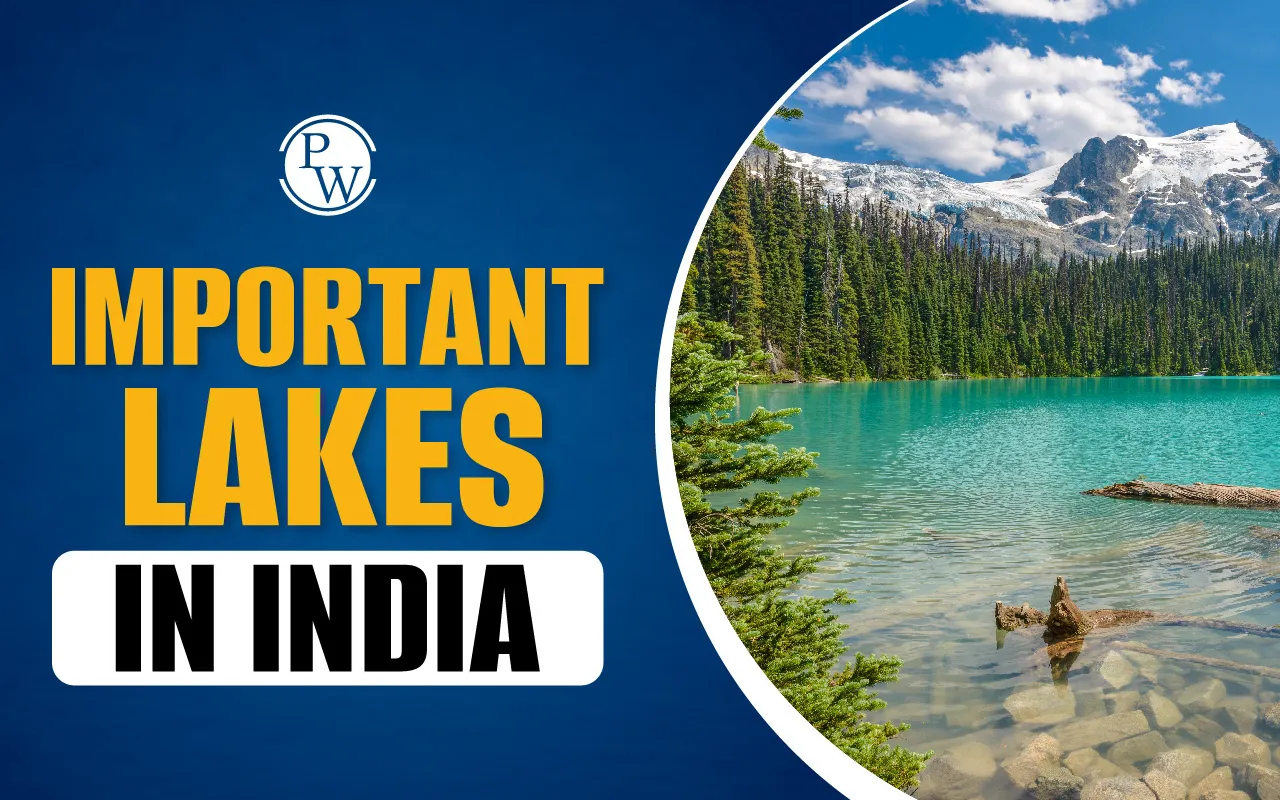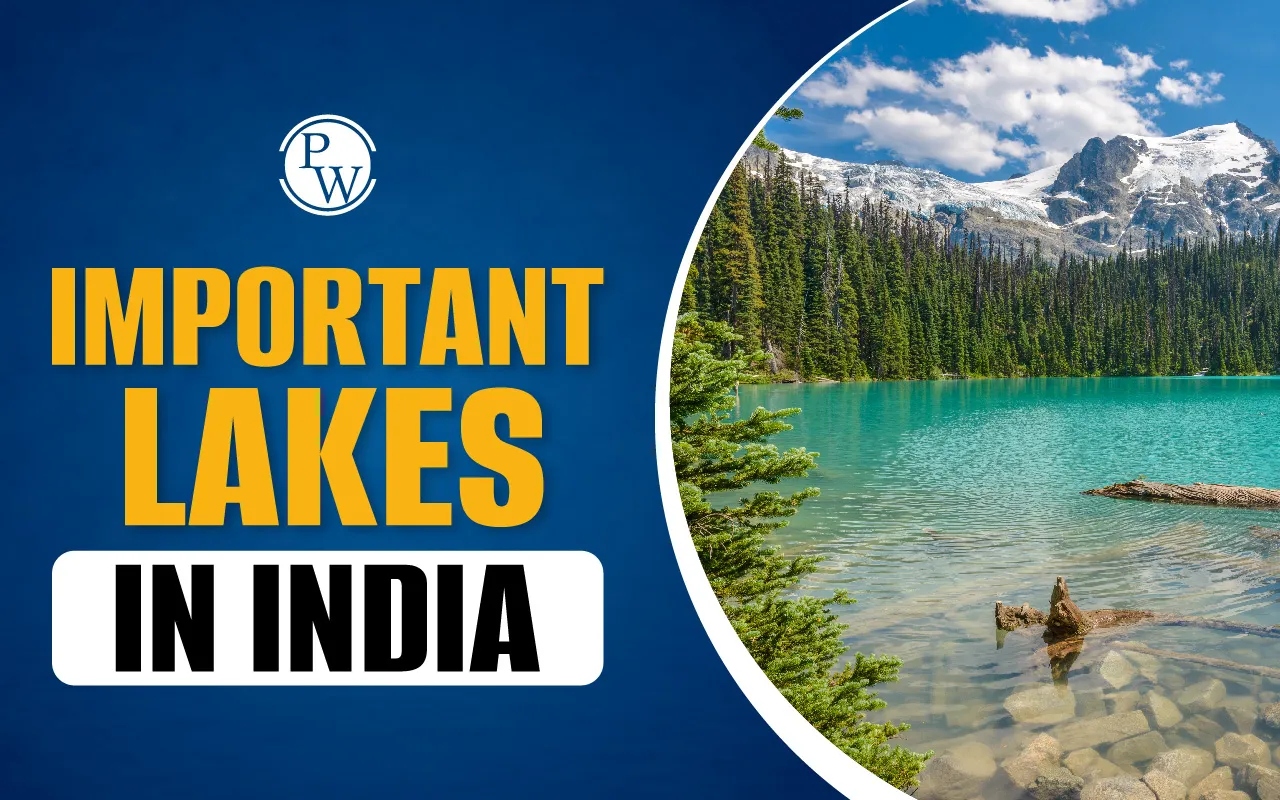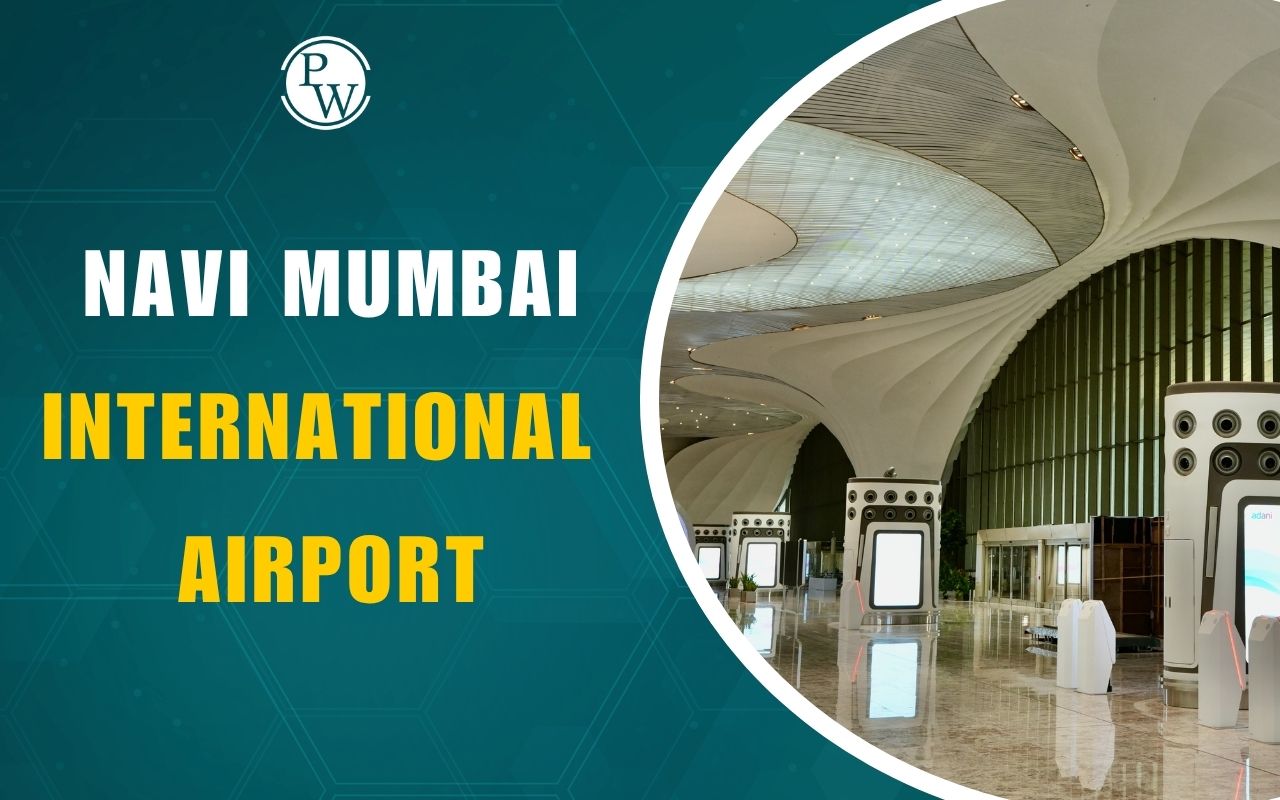

Important Lakes in India are natural treasures. These lakes provide water, support wildlife, and boost tourism. India is home to around 100 lakes, which are classified as large and important due to their ecological, economic, and cultural significance. Each state has its own unique and important lakes. Read on to explore different types of lakes and state-wise list of important Lakes in India.
What is a Lake?
A lake is a large water body surrounded by land. Unlike rivers, lakes are still or slow-moving. They can be natural or man-made. Natural lakes form due to various geological processes like glacial movement, volcanic activity, and tectonic shifts. Man-made lakes are built for irrigation, hydroelectricity, or water storage.
India has thousands of lakes, many of which hold ecological and cultural significance. These lakes serve multiple purposes:
-
Drinking water source
-
Agriculture and irrigation
-
Fishing and aquaculture
-
Hydroelectric power generation
-
Tourism and recreation
-
Wildlife habitats
Lakes are important for environmental balance and maintaining groundwater levels. Some are seasonal, while others remain full throughout the year.
Types of Important Lakes
Lakes are classified based on their origin, water type, and usage. Here are the main types:
| Type | Description | Examples |
| Freshwater Lakes | Lakes containing fresh water with low salt concentration. | Dal Lake (India), Lake Superior (North America), Lake Victoria (Africa) |
| Saltwater (Saline) Lakes | Lakes with high salt concentration, often in arid regions. | Sambhar Lake (India), Dead Sea (Middle East) |
| Brackish Water Lakes | Lakes with a mix of fresh and saltwater, often found near coastal areas. | Chilika Lake (India) |
| Natural Lakes | Lakes formed naturally by geological or hydrological processes. | Vembanad Lake (India), Lake Baikal (Asia) |
| Artificial (Man-made) Lakes | Lakes created by human activity such as damming rivers or excavation. | Gobind Ballabh Pant Sagar (India), Hussain Sagar (India) |
| Tectonic Lakes | Lakes formed by movements of the Earth's crust, often very deep. | Lake Baikal (Asia), Lake Tanganyika (Africa) |
| Crater Lakes | Lakes formed in volcanic craters or calderas. | Tsomgo Lake (India, glacial crater lake) |
| Oxbow Lakes | Lakes formed from abandoned meanders of rivers. | Various small lakes in river plains (India has some oxbow lakes) |
| Temporary Lakes | Lakes that exist temporarily, often seasonal or after heavy rains. | Some floodplain lakes |
| Permanent Lakes | Lakes that exist year-round. | Most major lakes like Lake Victoria, Dal Lake |
List of Important Lakes in India
India is home to numerous significant lakes that play crucial roles in ecology, culture, and economy. Here’s a list of some of the most important lakes across the country:
| Lake Name | State/UT | Key Features |
| Vembanad Lake | Kerala | Longest lake in India; features both brackish and freshwater zones; hosts Nehru Trophy Boat Race; Ramsar site |
| Chilika Lake | Odisha | Largest brackish (saline) water lake in India; key habitat for migratory birds and endangered species; Ramsar site |
| Wular Lake | Jammu & Kashmir | Largest freshwater lake in India; tectonically formed; nourished by the Jhelum River |
| Cholamu Lake | Sikkim | The highest lake in India (5,330 meters); glacial origin near the Indo-China border |
| Govind Ballabh Pant Sagar (Rihand Dam Reservoir) | Uttar Pradesh | Largest artificial lake in India; built on the Rihand River for hydroelectric and irrigation purposes |
| Dhebar Lake (Jaisamand Lake) | Rajasthan | Second-largest artificial lake in India, constructed in the 17th century in the Udaipur District |
| Dal Lake | Jammu & Kashmir | Picturesque freshwater lake, iconic for houseboats and Shikara rides |
| Pulicat Lake | Andhra Pradesh | Second-largest brackish water lagoon in India, shared with Tamil Nadu |
| Kolleru Lake | Andhra Pradesh | Large seasonal freshwater lake; important bird habitat between the Godavari and Krishna rivers |
| Loktak Lake | Manipur | Largest freshwater lake in Northeast India; known for floating phumdis and the world’s only floating national park |
| Sambhar Lake | Rajasthan | Largest inland saltwater lake in India; used extensively for salt production |
| Pushkar Lake | Rajasthan | Artificial holy lake; religious significance among Hindus |
| Nainital Lake | Uttarakhand | Crescent-shaped natural lake; central attraction of the hill station Nainital |
| Bhimtal Lake | Uttarakhand | Freshwater lake near Nainital, named after Bhima of the Mahabharata |
| Chandubi Lake | Assam | Natural earthquake-formed lake; scenic and biodiversity-rich |
| Kanwar Lake (Kabar Tal) | Bihar | Asia’s largest freshwater oxbow lake, declared a Ramsar site and bird sanctuary |
| Haflong Lake | Assam | Natural scenic lake in Haflong hill station |
| Kankaria Lake | Gujarat | Man-made lake in Ahmedabad; recreational and heritage site |
| Hamirsar Lake | Gujarat | Artificial lake in Bhuj, historically used for urban water supply |
| Chembarambakkam Lake | Tamil Nadu | Major source of drinking water for Chennai; reservoir built on Adyar River |
| Hussain Sagar Lake | Telangana | Artificial lake between Hyderabad and Secunderabad; features large Buddha statue |
| Umiam Lake | Meghalaya | Man-made reservoir near Shillong; created for hydroelectric power |
| Tsomgo Lake | Sikkim | High-altitude glacial lake; sacred to local communities; freezes during winter |
| Lonar Lake | Maharashtra | Saline lake formed by a meteorite impact; unique geological site |
State-Wise Important Lakes in India
India has many beautiful and important lakes spread across its states. Here is the state-wise list of important lakes in India:
| State/UT | Lake (Type) |
| Andhra Pradesh |
|
| Assam |
|
| Bihar | Kanwar Lake (Oxbow, Freshwater) |
| Gujarat |
|
| Himachal Pradesh |
|
| Jammu & Kashmir |
|
| Karnataka |
|
| Kerala |
|
| Manipur | Loktak Lake (Lenticular Freshwater) |
| Odisha | Chilika Lake (Brackish Water) |
| Rajasthan |
|
| Sikkim |
|
| Uttar Pradesh | Govind Ballabh Pant Sagar (Artificial) |
| Uttarakhand | Bhimtal Lake (Freshwater) |
| West Bengal | East Calcutta Wetlands (Brackish Water) |
Explore more about India’s geography and environmental topics through PW UPSC Courses. Start your UPSC journey today!
Important Lakes in India FAQs
How many important lakes are there in India?
Which is the oldest man-made lake in India?
Which is the largest freshwater lake in India?
Which lake is known for floating islands?
What is the biggest saltwater lake in India?

UPSC Coaching












